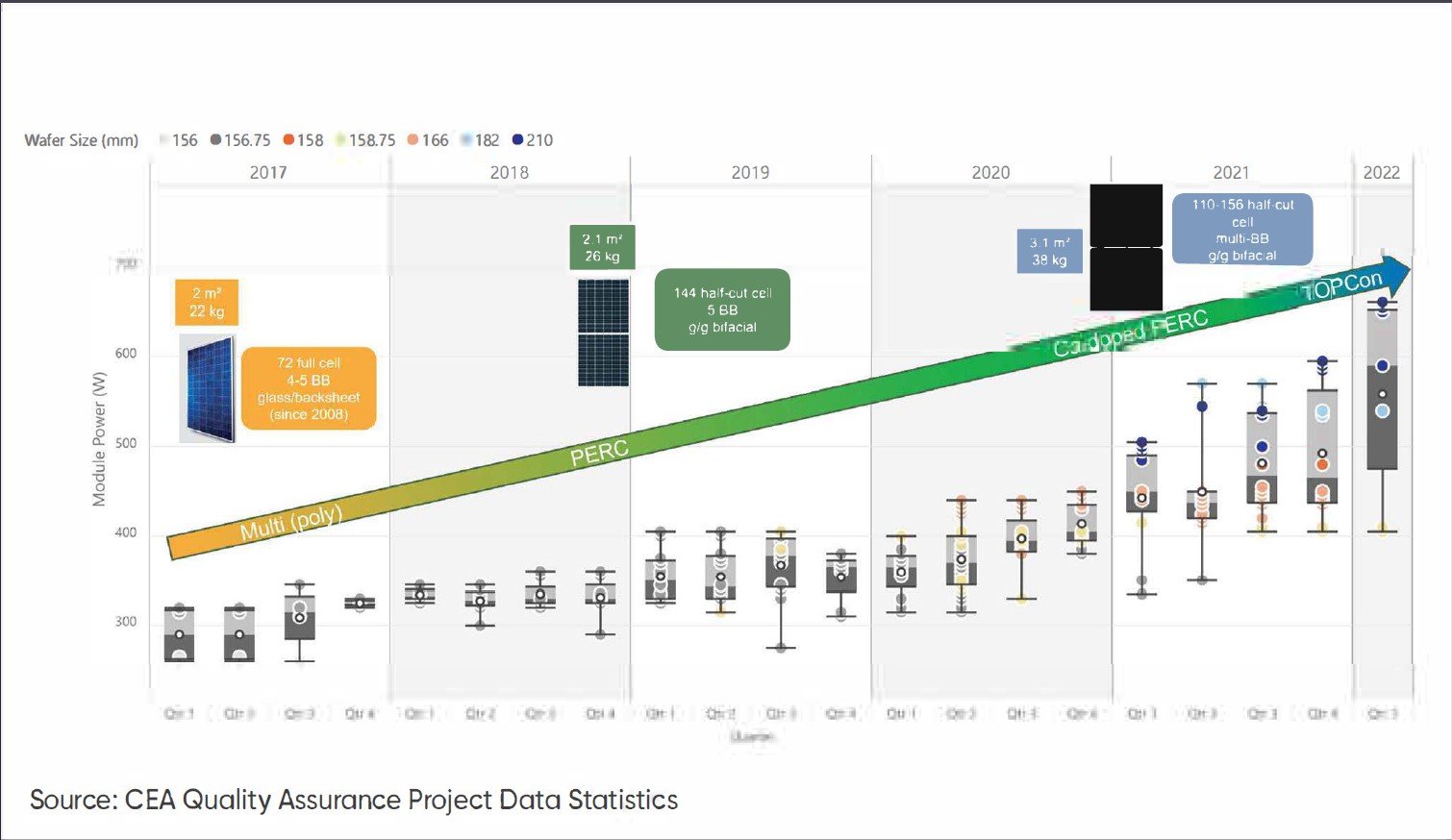Risk Analysis of New PV Technologies
By George Touloupas
In the Middle East Solar Industry Association’s (MESIA) 2023 Solar Outlook report, CEA’s Senior Director of Technology & Quality, George Touloupas, provides analysis of the quality risks associated with several new PV technologies.
Technology Changes
In the past 5 years, PV technology has progressed in multiple components of the PV module, namely, silicon technology, busbars, size and arrangement of cells and backsheets. The objective of all panel manufacturers is to achieve the highest efficiency and the lowest degradation. PV module manufacturers have adopted various permutations and combinations of improvements of these individual components in keeping with their current product and manufacturing capabilities to achieve the aforementioned goals. We shall explore the prevailing progress trends in these specific components of PV modules and how this affects the quality of the manufactured PV module and the LCOE.
The size, shape and number of busbars (wires) have also changed, reducing internal resistance. This has also led to an increase in the overall size of the PV modules, and Figure 1 below illustrates this evolution over this period.
We observe that 210 mm and 182 mm cell sizes have become dominant in the past 2 years, and this trend is likely to continue, as shown in Figure 2. PV module manufacturers use 210 mm manufacturing lines that can also produce 182 mm cells, and most 182 mm manufacturing lines are "future-proofed" to convert to 210 mm if needed quickly. PV cell manufacturers continue to maintain flexibility in manufacturing both 210 mm and 182 mm cell sizes.
Although n-type expansions appear limited, suppliers can accelerate the pace once the technology and cost hurdles are surpassed. At this point, the TOPCon capacity is especially favoured, as most existing PERC manufacturing capacity can be upgraded to TOPCON.
Figure 1: Module Power and Wafer Size Evolution
Figure 2: End of Year Global Capacity Outlook
Impact on PV Module Quality
The rapid and sometimes simultaneous introduction of new technologies increases the overall risk to quality. Hence, quality assurance teams collect multiple data points during factory inspections, including systematically recording defects of various severities and frequencies….
Access the full article on pages 17-20 of MESIA’s 2023 Solar Outlook Report












